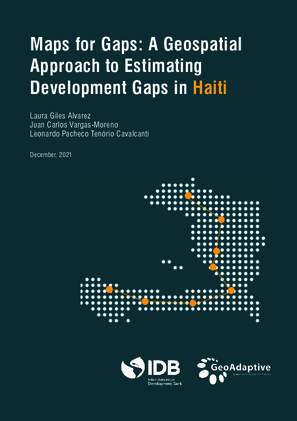Maps for Gaps: A Geospatial Approach to Estimating Development Gaps in Haiti
Date
Dec 2021
This paper presents the results of a development gap analysis for Haiti using a geospatial approach. Gaps are calculated and characterized by means of qualitative and quantitative techniques, including macroeconomic, microeconomic, and geospatial data analyses. The analysis identifies, presents, and discusses 16 sectoral gaps. It is then expanded by overlapping the sectoral gaps to identify possible relations and spillover effects between them. The results suggest that transportation, early childhood education, and crime and insecurity gaps are the most significant in terms of the area and population affected. Results also show that 24 percent of the area of the country and 9.9 percent of Haitians are affected by nine or more overlapping gaps, particularly in the Nord-Ouest, Artibonite, and Centre departments. In terms of the links between sectors, crime and insecurity gaps tend to overlap with gaps in early childhood education and employment opportunities.




